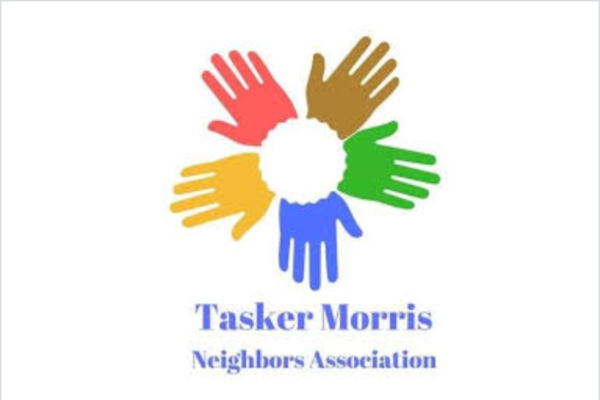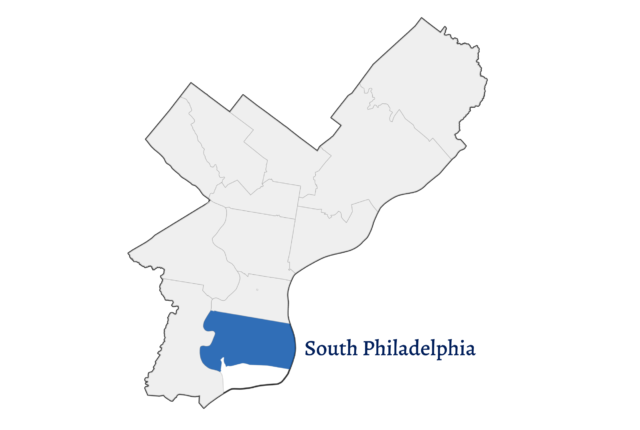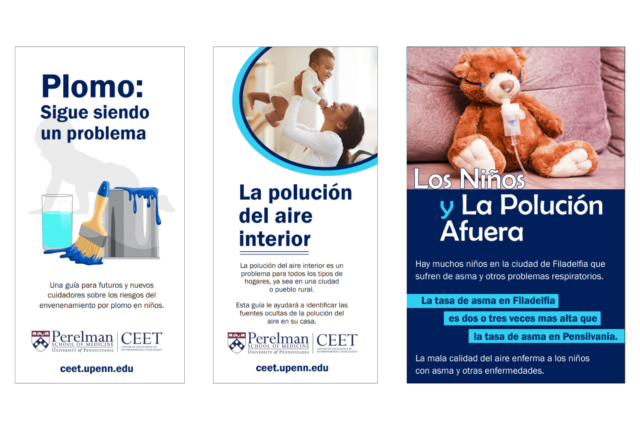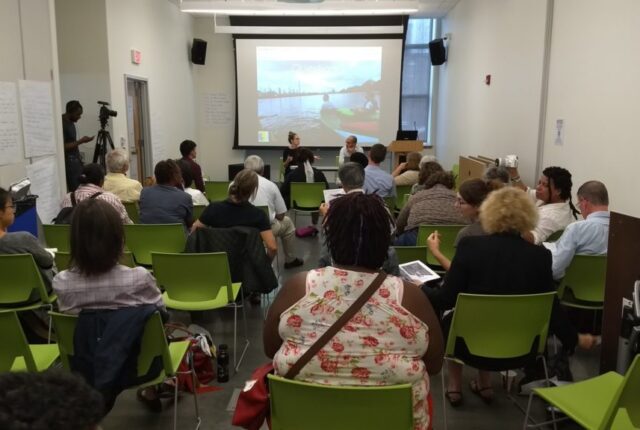
South Philadelphia
Background
South Philadelphia is a lively and diverse working class neighborhood known for its rich cultural heritage and strong sense of community. South Philadelphia contains a growing population of Asian and Hispanic residents. South Philadelphia has a long industrial history and many sources of environmental pollution, including the Philadelphia Airport, Navy yard, multiple interstates, and the former PES refinery.

Hazard Profile
From 1860- 2019, South Philadelphia was home to the Philadelphia Energy Solutions (PES) refinery, the largest oil refinery on the east coast and the single largest source of volatile organic compound emissions in Philadelphia. In addition to the refinery, South Philadelphia is home to two major interstates, I-95 and I-76, and lies adjacent to the Philadelphia International Airport. South Philadelphia residents believe that their neighborhood has increased cancer rates due to their environmental exposures. Many of the residents suffer from asthma and pulmonary related diseases. Due to an excess of concrete surfaces and lack of green space, South Philadelphia can experience summer temperatures that are at least 10°F higher due to the urban heat island effect. These temperature increases can put residents at higher risk of heat related illness.

CEC Activities
In South Philadelphia, the CEC works with a variety of community groups including Philly Thrive, the United South/Southwest Coalition, the Tasker-Morris Neighborhood Association, and Puentes de Salud. We work with communities on environmental health issues including industrial pollution, safe home conditions, and the climate change impacts on health.
Engagement around the Philadelphia Energy Solutions (PES) Refinery
The CEC has been engaged with the community near the PES refinery since 2014. While in operation, we engaged with the community around their concerns of carcinogenic emissions from the refinery and its ensuing waste site. CEET Researcher Thomas McKeon mapped the exposome around the site from 1987 to 2017 (map to the right). This map showed elevated toxic air emissions in Southwest Philadelphia during operation. After the PES Refinery exploded on June 21, 2019, we addressed community questions around why air monitors in Philadelphia did not pick up the fire and smoke plume from the explosion. CEET Researcher Dr. Peter DeCarlo created a map of the smoke plume showing how it did not pass over any existing monitors.
Since the explosion, we continue to work with community partners, policymakers, and site officials to address the health impacts of legacy pollution and redevelopment plans for the site. We have worked with community groups including Philly Thrive, the United South/Southwest Coalition, and the Tasker-Morris Neighborhood Association to ensure meaningful involvement of the community in the redevelopment process at the PES refinery. CEC Director Marilyn Howarth provided testimony to the Philadelphia City Council and the Senate Environmental Resources & Energy Committee on the legacy pollution at the site and redevelopment plan including the planned distribution facility.

Puentes de Salud
We have a partnership with Puentes de Salud, a nonprofit which runs a clinic in South Philadelphia for the expanding Hispanic immigrant population. We are working with them to translate our materials on environmental health to Spanish and create a video on improving environmental conditions in rental properties without being evicted.

South Philadelphia Air Toxics Community Engagement Project
The CEC partnered with Philadelphia Air Management Services (AMS) and the Girard Music Academy Program (GAMP) to develop an air toxics curriculum that was taught within existing science courses at GAMP. GAMP teachers have worked with the CEC to develop a series of educational tools for the School District of Philadelphia (SDP) to increase environmental health literacy in students living in neighborhoods exposed to air toxics emissions increasing health risks.

Our Partnerships in South Philadelphia
CEC Resources
Explore our resources to find helpful information and programs relevant to the South Philadelphia community. View our Community Resources page to view all our resources.

Comments on the Proposed Changes to Soil Lead Models
Public Comments Comments to the PA DEP on their proposed changes to soil lead models that would impact the cleanup at the PES refinery site. Submitted on January 27, 2022.
Environmental Health Impacts of the PES Refinery and Site Reuse
Testimony Testimony to the PA Senate Environmental Resources & Energy Committee on November 17, 2021.
Lead Soil Map
GIS Map View our resources on lead, including our lead soil map with over 3,900 soil samples representing 86% of census tracts in Philadelphia.
How to Collect Soil Samples for Lead Testing
Document Written instructions on how to collect soil samples for lead testing.
Lead: It’s Still a Problem (English & Spanish)
Brochure Information on lead, the health effects of lead poisoning, and ways to reduce exposure.
Effects of Lead on Children’s Health
Infographic Infographic on the effects of lead on children’s health.
Is Your Water Pipe Made of Lead?
Infographic Step-by-step guide on how to check if you have lead pipes and ways to reduce exposure to lead through drinking water.
Mandatory Lead Certification for all Philadelphia Contractors
Policy brief Policy brief for establishing a bill in Philadelphia to require all contractors to receive lead safe certification.
Indoor Air Pollution (English & Spanish)
BROCHURE Information on sources of indoor air pollution in the home and how to reduce health effects from indoor air pollution.
Children and Outdoor Pollution (English & Spanish)
BROCHURE Information on outdoor pollution and the potential health outcomes for asthmatic children.Get Involved
Do you live or work in this community and would like to get involved with our work? Please contact us!
Contact Us


